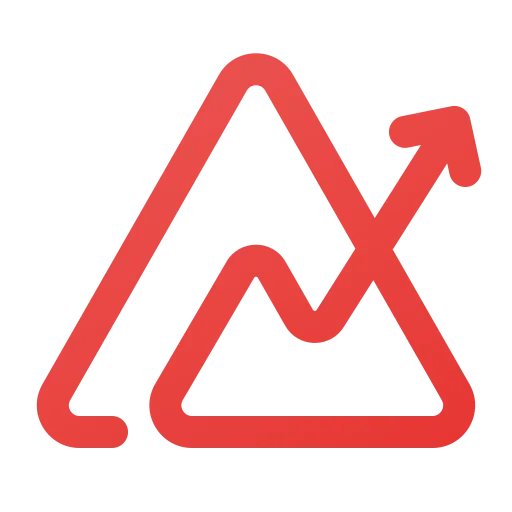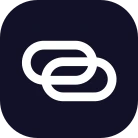| Architecture |
- Cloud Data Warehouse: Offers a fully managed SQL data warehouse on AWS, Azure, or GCP.
- Storage–Compute Separation: You can scale storage and compute independently, one of Snowflake’s key differentiators.
- SaaS Model: Your data resides in Snowflake’s cloud; you can’t host it on your own servers.
|
- Cloud-Based BI Platform: Primarily a multi-tenant SaaS solution for data visualization and reporting.
- No Dedicated Data Platform: Lacks a fully integrated data platform or warehouse; it hosts your data on Zoho’s cloud with limited external access.
|
All-in-One PaaS: Ingestion, data warehouse (ClickHouse), transformations (managed, built on DBT-core), governance (RBAC), and monitoring all in one platform.
BYOC: Deployed in your own cloud (AWS, Azure, etc.).
OpenEngine: Spin up isolated virtual warehouses on-demand (storage & compute isolation).
|
| Ingestion & Connectors |
- Snowpipe: Built-in ingestion mechanism for data files in cloud storage (e.g., Amazon S3).
- Limited Native Connectors: For broader SaaS/DB ingestion, you’ll typically need external tools like Fivetran or Airbyte.
|
- Built-In Connectors: Supports major databases, SaaS applications, and file-based sources.
- Sync Frequency: Can refresh data as frequently as once per hour. Not ideal for near-real-time scenarios requiring sub-hour syncs.
|
150+ native connectors (DB, SaaS, analytics), including JSON flattening/array-explosion.
First Full Sync (Full Table Refresh via CTID, GTID, or Query-based).
Incremental load via Change Data Capture (CDC, oplog, binlog, WAL) or Cursor field or Xmin.
OAuth-based simple sign-in connections for many popular sources (Google Sheets, Analytics, Salesforce, Facebook Ads, etc.).
Supports 30–60s near real-time sync for many sources.
Ad-hoc service ingestion (Kafka, S3, event-based) also supported.
|
| Data Warehouse |
- Fully Managed: Snowflake handles cluster provisioning, administration, and updates.
- ACID Transactions: Offers robust SQL-based querying and concurrency controls.
- Micro-Partitions: Columnar storage with automated optimization.
|
- No Open-Ended Warehouse: Cannot connect directly to the underlying Zoho data store for custom applications or external BI tools.
- Storage: Data is stored in Zoho’s cloud environment with limited control over backend scaling.
|
Fully Managed (ClickHouse-based) warehouse included in the cost.
Columnar DB for high-performance analytics (OLAP).
OpenEngine automates scale & concurrency with zero-downtime upgrades, plus data compression and cold storage.
|
| Data Transformation |
- SQL-Centric: Primarily relies on SQL queries and functions for transformations.
- External Tools: For advanced scheduling/orchestration or code-based transformations, you’ll typically use dbt, Airflow, or other workflow orchestrators.
|
- Basic Data Prep: Offers some data cleaning and lightweight transformation via Zoho DataPrep.
- Limited Complexity: Lacks advanced transformation features such as dbt-like transformations, complex pipelines, or code-based frameworks.
|
SQL + Jinja (DBT-core-based) transformations.
Medallion architecture (Bronze → Silver → Gold) with clear data lineage visualization.
Incremental, CDC (WAL, Oplog), or Xmin replication.
Built-in data quality tests (DBT singular, generic); supports DBT packages (e.g., dbt-expectations).
|
| Observability & Monitoring |
- Built-In Dashboard: Snowflake UI provides basic query history, warehouse load, and performance stats.
- 3rd-Party Integration: Deeper monitoring may require external APM tools or custom logging solutions, as there is no single “pane of glass” for multi-step pipelines.
|
- Internal Usage Metrics: Primarily focuses on usage statistics like dashboard views and user counts.
- Limited Observability: No robust built-in monitoring for data ingestion pipelines or system-level resource metrics; external tooling might be needed.
|
Integrated observability: Grafana, Prometheus, and Loki are pre-configured.
OpenEngine automatically scales separate compute resources as workloads vary.
Centralized logs & metrics, no extra stitching of APM tools required.
|
| Governance & Security |
- Role-Based Access: Fine-grained permissions to databases, schemas, tables, and views.
- Cloud-Hosted: You can choose the cloud provider region, but data resides in Snowflake’s SaaS environment.
- Row-Level Security: Supported, but you must configure policies in Snowflake.
|
- BI-Focused Governance: Provides user roles, permissions, and access controls primarily at the dashboard/report level.
- Cloud-Hosted: Data resides in Zoho’s cloud with standard encryption, but no direct private cloud/VPC option for advanced data isolation.
- Row-Level Security: Limited or requires additional setup; more geared toward restricting dashboards or reports than granular data-level policies.
|
RBAC (Role-Based Access Control).
SSO support & fine-grained permissioning down to database/table level.
BYOC ensures data never leaves your own cloud/VPC. Data privacy is maintained by VPC/VNET networking.
|
| ETL & BI |
- Warehouse Only: Snowflake doesn’t natively handle end-to-end ETL or BI dashboards.
- External ETL: Tools like dbt, Talend, Informatica, or Fivetran handle ingestion and transformations.
- BI: Use a separate solution (e.g., Power BI, Tableau, Looker) to build dashboards and reports.
|
- Primarily a BI Tool: Excellent charting, dashboards, data blending, and interactive analytics.
- Limited ETL: Basic ingestion and transformation capabilities; advanced ETL often requires external solutions or separate data pipelines.
|
BI Integration: Connect seamlessly with Metabase, Redash, Power BI, Tableau, Appsmith, Looker Studio, etc., from within OneStack.
|
| Innovation & ML |
- Snowflake Marketplace: Access to data services and external function integrations.
- ML: You can connect Snowflake to ML frameworks (e.g., DataRobot, AWS SageMaker, Python UDFs) but there is no fully integrated ML environment out of the box.
|
- Zia Insights: AI-driven data analysis and insights using natural language queries.
- Incremental AI Features: Continues to evolve its AI for dashboarding; however, lacks robust machine learning pipelines or model hosting.
|
Intelligent pre-emptive/auto scaling (OpenEngine).
Can connect to tools like MindsDB or other ML frameworks externally.
|
| Scalability & Performance |
- Compute Clusters (Warehouses): You can spin up/down multiple virtual warehouses for different workloads.
- Auto-Scaling: Can automatically add compute resources, though you pay for each active warehouse.
- High Performance: Designed for large-scale analytics but can become expensive with massive data volumes.
|
- Row Limit: Standard pricing tiers support up to approximately 50 million rows, which can be extended at higher costs.
- Sync & Processing: 1-hour minimum refresh interval and internal processing can become slow at higher data volumes.
|
Ingests 100–200M rows/day comfortably.
On-demand scaling with OpenEngine to handle spikes and prevent warehouse overload.
Columnar store ensures high-performance queries and fast analytics.
|
| Engineering Required |
- Data Warehouse Expertise: At least one data engineer or admin is usually needed for best practices (e.g., table partitioning, role assignment).
- Tool Integration: Additional setup to coordinate ingestion, transformations, and BI with Snowflake’s security model.
|
- Minimal Setup for Small Data: Analysts or business users can configure basic dashboards with ease.
- Large-Scale Needs: Handling beyond 50–100 million rows, sub-hour data refreshes, or deeper transformations often necessitates a dedicated data warehouse and engineering team.
|
No dedicated data engineer required for companies just starting with data engineering.
A Data Analyst/Product Manager with basic SQL can manage the entire pipeline.
Cleaned and transformed data to dashboards within a few minutes.
|
| Pricing |
- Consumption-Based: Charged based on compute usage (credits) plus storage costs.
- Potentially High at Scale: At very large volumes (e.g., 50 TB/day scanning), monthly costs can reach $5k–$10k.
- Pay for Idle: If a warehouse is left running, you pay for it even if queries are minimal.
|
- User-Based Pricing: Starts around $200/month for 50 users; each additional user may incur extra costs.
- Annual Commitments: Typically requires yearly contracts for the best pricing and usage tiers.
- Potentially Costly at Scale: As data or user counts grow, license fees can add up significantly.
|
$1,000–$1,200/month on average (includes warehouse infra + Datazip cost + support).
Starts as low as $300 for minimal usage tiers (pay-as-you-grow).
Overall ~60% cost savings vs. stitching together Fivetran, DBT, Snowflake, etc.
|
| Support & SLA |
- Snowflake Support Tiers: Offers 24/7 enterprise-level support with 1–2 hour initial response times for critical issues, available at an additional cost.
- Basic Support: Provides slower response times, typically next-business-day for non-critical tickets.
- Community & Documentation: Robust user forums and official documentation available.
|
- Standard Support: 24-hour first response time for basic plans.
- Premium Support: Offers quicker (8-hour) response SLAs, but overall support remains limited to Zoho Analytics platform issues.
|
SLA: ~4–5 hour response time (IST 10 AM–10 PM) for critical issues.
Offers on-call and hands-on guidance for migration, backups, multi-cloud, etc.
|
| Build on Top of Us | | |
Managed ClickHouse is open ended: scale up/down via APIs, and move your data to any storage system of your choice.
DBT-based transformations with full support for all DBT plugins/packages.
Ingestion APIs available for custom connectors.
|
 Snowflake
Snowflake Zoho
Zoho OneStack by Datazip©
OneStack by Datazip©